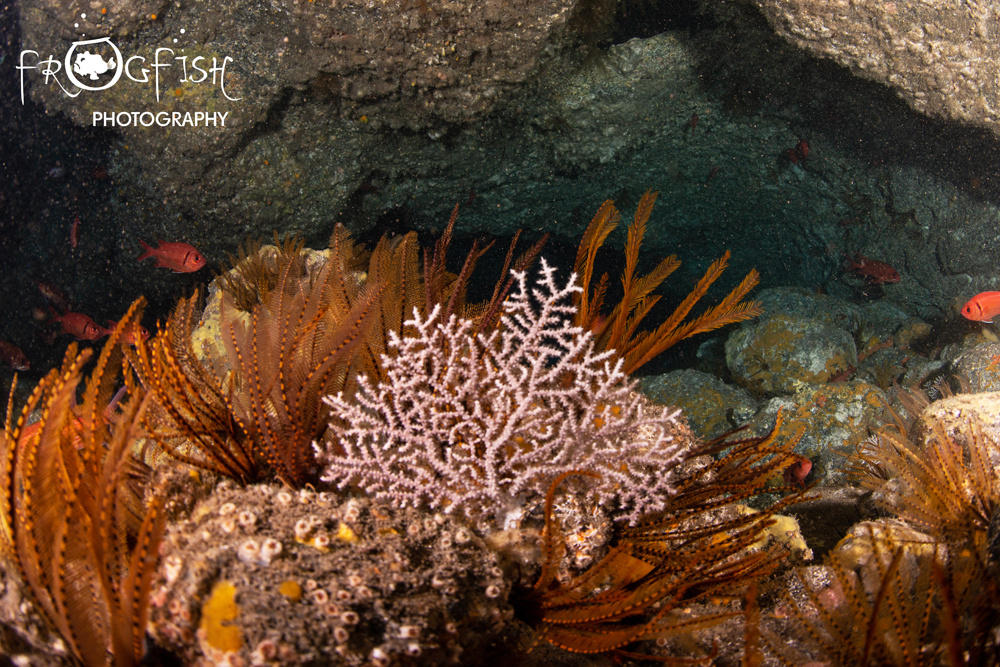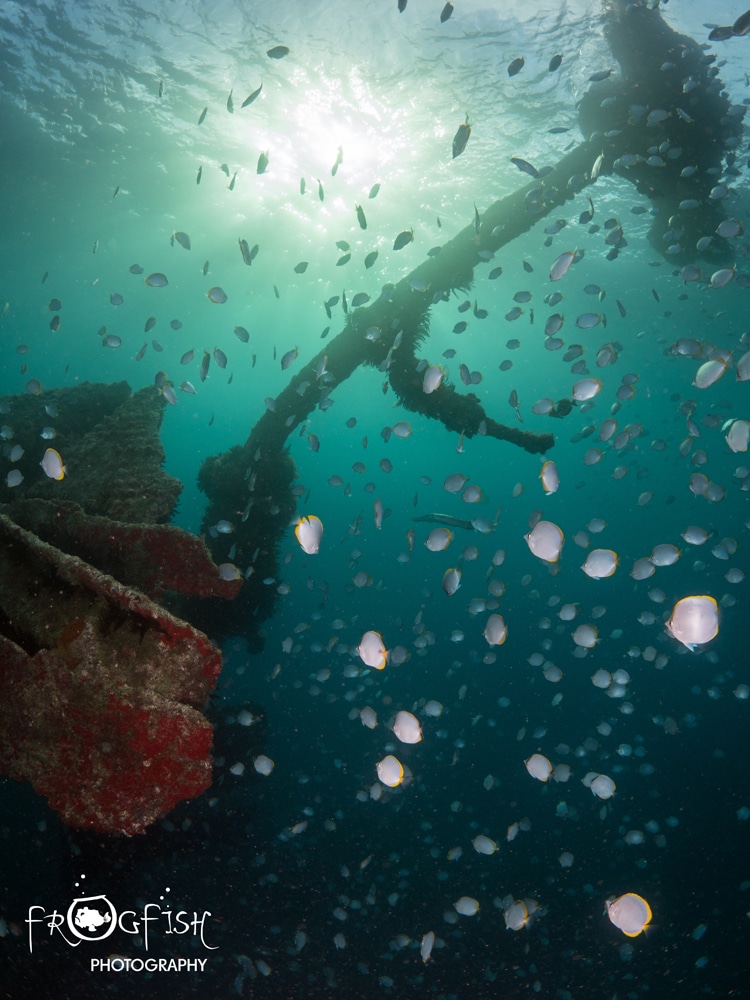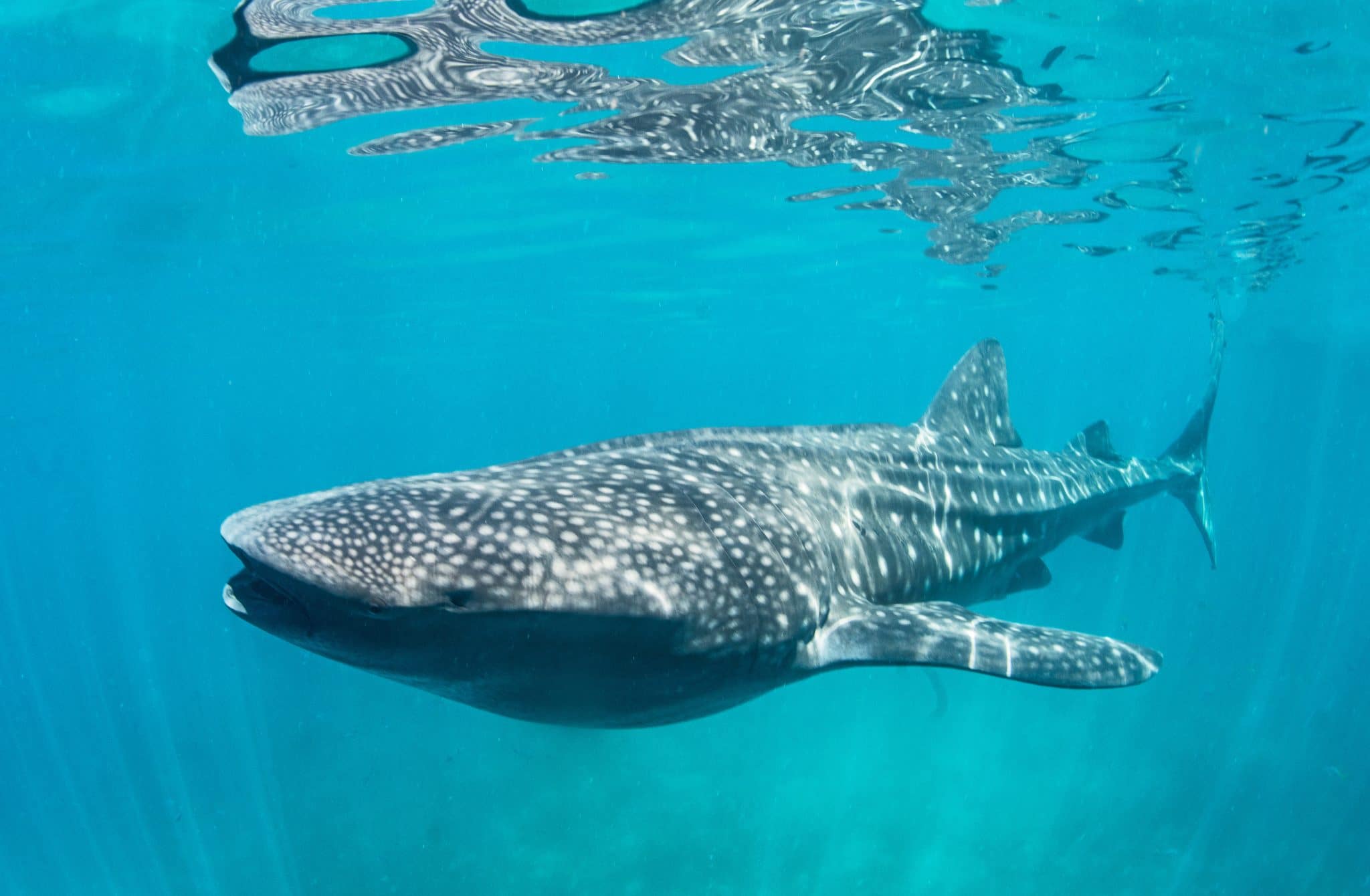Marine Life & Conservation
St Helena Recognised as an International marine Hope Spot

International marine conservation organisation Mission Blue officially recognised St Helena’s Marine Protected Area as a Hope Spot. Hope Spots are recognised as special places, being one of a kind areas of ocean that are scientifically identified for their uniqueness, and most importantly their community’s contribution and efforts in maintaining or improving global ocean health.
St Helena was nominated as a Hope Spot by two champions, the Director of the St Helena National Trust Helena Bennett and Director of Global Policy at Georgia Aquarium Dr Dayne Buddo. This nomination was supported by St Helena Government.
St Helena is honoured that Mission Blue has assessed St Helena’s efforts to safeguard our ocean and recognised us as a Hope Spot.
It also means that St Helena joins an ocean network of 156 Hope Spots around the world. These cover a combined near 60,000,000km2 of ocean, stretching from the Antarctica to the Arctic, and includes our sister island of Ascension.
This recognition follows a significant 20 year journey for St Helena in understanding and protecting the Island’s marine environment. It began with projects initially assessing whales, dolphins and birds, as well as undertaking basic fisheries science to build a baseline of knowledge and understanding. In 2012 St Helena Government started to consider a potential Marine Protected Area (MPA) designation. Between 2012 and 2016 various scientific programs were undertaken in collaboration with Island users and stakeholders, considering the social impacts of designation.
This ultimately led to 100% of St Helena’s near 450,000km2 Exclusive Economic Zone (EEZ) being designated as an IUCN Category VI sustainable use MPA in 2016, along with the publication of the Island’s first Marine Management Plan.
By comparison, only 8% of the world’s oceans are currently designated as MPAs, with under 3% being highly protected. This is set amid a backdrop where are our oceans have never been more at threat, from challenges including the impacts of climate change, ocean acidification, pollution and illegal fishing.
Following designation of the MPA, significant work has been ongoing to improve the understanding of the territory’s marine environment. This has been made possible by working closely with a variety of external partners and funders, such as the UK Government Darwin Initiative, the Blue Marine Foundation, the International Pole and Line Foundation and Georgia Aquarium.
Since 2016, St Helena has been fortunate to be a part of the UK Government’s Blue Belt Programme, which supports the Overseas Territories with the protection and sustainable management of their marine estates. The programme has provided significant funding and capacity to St Helena. This has catapulted St Helena’s science and research, in turn providing the evidence that underpins the MPAs management measures and the newly implemented 2023 Marine Management Plan.
In 2018, the St Helena National Trust with support from the Blue Marine Foundation, extended its advocacy of the Island’s natural heritage to include marine based conservation, education and outreach. The trust continues conservation monitoring of key marine species such as whale sharks and seabirds, promoting sustainable fisheries and the reduction of plastics and marine debris, contributing further evidence to underpin the Marine Management Plan.
This work, combined with St Helena’s distinctive features, has now been assessed by a reputable internationally recognised organisation who are to call St Helena a Hope Spot.
Many MPAs are designated in an effort to restore that area to a functional and thriving condition as a result of previous damage. St Helena’s marine environment remains in near pristine condition, and the community of St Helena is rightly proud to keep watch over an area that provides inspiration to others.
St Helena’s unique characteristics, most notably its remoteness and historic limited human pressures, has not only created unique habitats but also distinct assemblages of species. St Helena’s MPA attracts highly migratory and globally significant animals such as tuna, whale sharks and humpback whales.
St Helena has undertaken every reasonable effort within its control to ensure marine uses limit human pressure in order to deliver sustainability, even as marine tourism becomes more popular in reflection of St Helena’s amazing natural environment. For example:
- One by one fishing practices are permitted for certain key species, and unselective fishing methods are prohibited.
- Total allowable catch limits and size limits are in place.
- Robust wildlife and habitat interaction rules have been put in place, balancing the education and enjoyment of marine users against the need to safeguard our habitats and species for the future.
Dr Sylvia Earle, founder of Mission Blue, said:
“This marine protected area and new hope spot of nearly half a million square miles now faces pressures largely outside its control from rapidly changing climate, invasive species and pollution. By becoming a Hope Spot, St Helena can act as a beacon to the rest of the world. Although geographically isolated, it is deeply ecologically connected to many distant realms, and indeed, other Hope Spots.”
Director of St Helena National Trust, Helena Bennett, said:
“The ocean has a way of enchanting us, capturing our imagination and intriguing us with mysteries of the unexplored. Our Island and its surrounding waters are steeped in our culture and traditions, and have played a massive role in our history’s timeline since our island’s discovery in 1502, evolving our way with a sense of nostalgia and a feeling of belonging and home.”
UK Foreign, Commonwealth and Development Office Minister David Rutley said:
“St Helena is home to a range of unique marine species and habitats creating breath-taking coastal and underwater sceneries. I’m proud to see St Helena’s MPA designated as a ‘hope spot’, this speaks to the fantastic working collaborations St Helena has with its local community, Government and NGOs in creating ocean conservation consciousness through sustainable use.”
“The UK’s landmark Blue Belt Programme has also enabled positive lasting change for the island, through its facilitation of a range of support covering innovative science initiatives such as, the deployment of a network of underwater cameras to help observe and quantify ocean wildlife, a purpose-built marine laboratory to ensure evidence-based management of habitats and species is undertaken supported by a robust policy, legislation, education and enforcement. An exemplar of creating positive change for the protection of the marine environment for the rest of the world”.
Minister for Environment, Natural Resources and Planning, Christine Scipio, said:
“As a community we are rightly proud of our unique marine environment, which is reflected in how we approach our stewardship of it. We’ve spent the last 20 years developing our knowledge of our special waters and ensuring we only permit the most sustainable of practices within our MPA. We’re delighted that Mission Blue has recognised St Helena as a Hope Spot, and hope that we can act as an example to the rest of the world of what can be achieved despite your size and limited resources.”
Graham Sim, former Fisheries Officer and long term advocate for St Helena’s marine environment, said:
“The thing about it is, and I don’t know why, there is something about the ocean that I have always been attracted to. St Helena is in a unique position and has come a long way with the conservation and protection of the marine environment, with the local younger generations being much more aware of the need to protect the ocean, giving us all hope for the future. But, there is a lot that still needs to be done here, and elsewhere, and we need to keep focused on what is required to protect our beloved oceans.”
More information about the Hope Spot network can be found online at www.missionblue.org/hope-spots.
Blogs
Invitation from The Ocean Cleanup for San Francisco port call

6 years ago, The Ocean Cleanup set sail for the Great Pacific Garbage Patch with one goal: to develop the technology to be able to relegate the patch to the history books. On 6 September 2024, The Ocean Cleanup fleet returns to San Francisco bringing with it System 03 to announce the next phase of the cleanup of the Great Pacific Garbage Patch and to offer you a chance to view our cleanup system up-close and personal.
We look forward to seeing you there.
To confirm your presence, please RSVP to press@theoceancleanup.com
PROGRAM
Join The Ocean Cleanup as our two iconic ships and the extraction System 03 return to San Francisco, 6 years and over 100 extractions after we set sail, to create and validate the technology needed to rid the oceans of plastic.
Our founder and CEO, Boyan Slat, will announce the next steps for the cleanup of the Great Pacific Garbage Patch. Giving you a chance to view our cleanup system and the plastic extracted.
Hear important news on what’s next in the mission of The Ocean Cleanup as it seeks to make its mission of ridding the world’s oceans of plastic an achievable and realistic goal.
Interviews and vessel tours are available on request.
PRACTICALITIES
Date: September 6, 2024
Press conference: 12 pm (noon)
Location: The Exploratorium (Google Maps)
Pier 15 (Embarcadero at Green Street), San Francisco, CA
Parking: Visit The Exploratorium’s website for details.
RSVP: press@theoceancleanup.com
Video & photo material from several viewing spots around the bay
We look forward to seeing you there!
ABOUT THE OCEAN CLEANUP
The Ocean Cleanup is an international non-profit that develops and scales technologies to rid the world’s oceans of plastic. They aim to achieve this goal through a dual strategy: intercepting in rivers to stop the flow and cleaning up what has already accumulated in the ocean. For the latter, The Ocean Cleanup develops and deploys large-scale systems to efficiently concentrate the plastic for periodic removal. This plastic is tracked and traced to certify claims of origin when recycling it into new products. To curb the tide via rivers, The Ocean Cleanup has developed Interceptor™ Solutions to halt and extract riverine plastic before it reaches the ocean. As of June 2024, the non-profit has collected over 12 million kilograms (26.4 million pounds) of plastic from aquatic ecosystems around the world. Founded in 2013 by Boyan Slat, The Ocean Cleanup now employs a broadly multi-disciplined team of approximately 140. The foundation is headquartered in Rotterdam, the Netherlands, and opened its first regional office in Kuala Lumpur, Malaysia, in 2023.
Find out more about The Ocean Cleanup at www.theoceancleanup.com.
Marine Life & Conservation
SHARK MONTH ARRIVES AT ROYAL WILLIAM YARD, PLYMOUTH

A shark has been spotted approaching Royal William Yard in Plymouth, much to the surprise of swimmers, paddleboarders and onlookers.
With its distinctive dorsal fin cutting through the water, the sizeable shark swam along the coastline, before turning to head inland towards Firestone Arch at Royal William Yard. The appearance drew a crowd, who were captivated for more than an hour by the unusual sight – and it was all caught on video.
The shark is one of many expected sightings at Royal William Yard over the coming weeks… because today marks the start of Shark Month!
In reality, the ‘shark’ spotted along the Plymouth shoreline was actually a custom-made model, created by the team at Royal William Yard and sailed underwater by Caroline Robertson‑Brown from the Shark Trust, who donned scuba diving gear for the occasion.
The stunt took place to launch Shark Month in style and draw attention to the work of the leading international conservation charity, which is based in Britain’s Ocean City. Spectators were reassured that the water was safe and many entered into the spirit of the performance, swimming or sailing alongside the shark.
Shark Month will take place across Royal William Yard throughout July and will feature an extravaganza of art, entertainment and advocacy for everyone to enjoy. The packed programme of events starts with an art exhibition and ends with a trip on paddleboards with shark experts – with everything from a shark quiz to a Jaws screening in between.
Paul Cox, CEO of the Shark Trust, said: “There are often assumptions and misconceptions when it comes to sharks. This was certainly the case with the shark spotted at Royal William Yard! While the British coastline is home to many species of shark, this was not one of them. However, we’re thrilled it caught people’s attention, because seeing a shark is a special and memorable moment. That is precisely why we want to celebrate these incredible creatures, highlight the need for conservation, and ask for help to safeguard their future.”
For more information about Shark Month at Royal William Yard, visit the Shark Trust Website.
Images and video: Jay Stone
-

 Blogs2 months ago
Blogs2 months agoDiving With… Nico, Ocean Earth Travels, Indonesia
-

 News1 month ago
News1 month agoMurex Bangka Announce New Oceanfront Cottages & Beachfront Dining
-

 Blogs2 months ago
Blogs2 months agoA new idea in freediving from RAID
-

 Marine Life & Conservation1 month ago
Marine Life & Conservation1 month agoIceland issue millionaire whale hunter a licence to murder 128 vulnerable fin whales
-

 Marine Life & Conservation2 months ago
Marine Life & Conservation2 months agoThe Shark Trust Great Shark Snapshot is back
-

 News3 months ago
News3 months agoCharting New Waters; NovoScuba Goes Global with the Launch of their Revolutionary Dive Training Agency!
-

 Gear News1 month ago
Gear News1 month agoNew Suunto Ocean – a dive computer and GPS sports watch in one for adventures below and above the surface
-

 Marine Life & Conservation Blogs2 months ago
Marine Life & Conservation Blogs2 months agoBook Review: Plankton


















